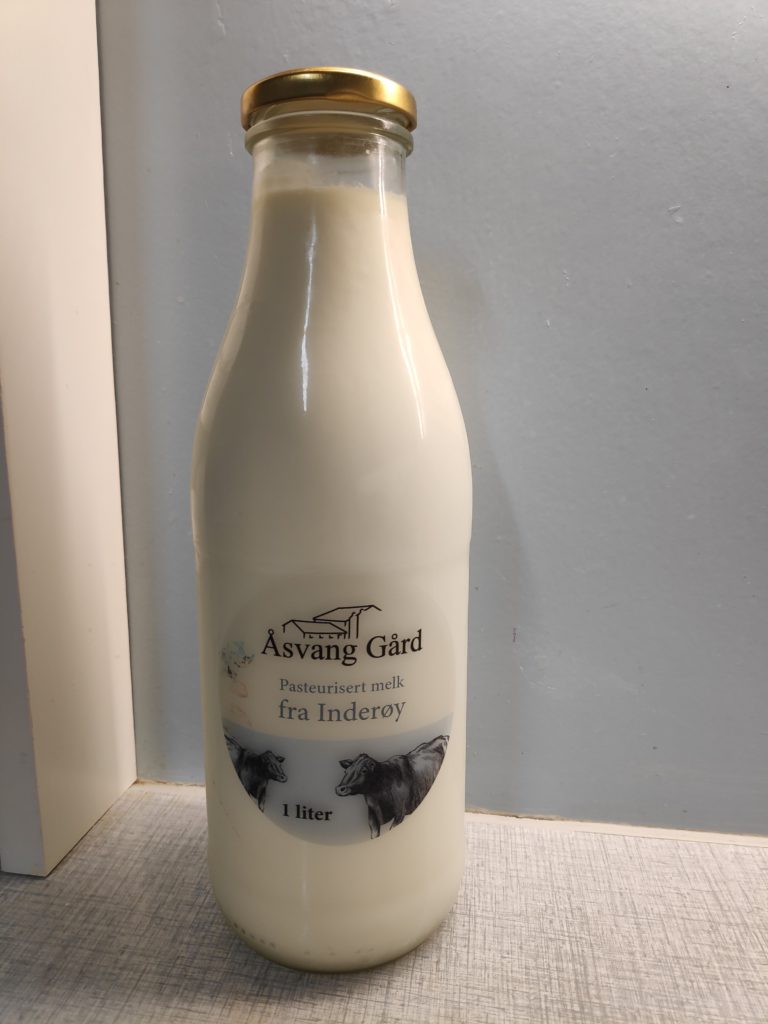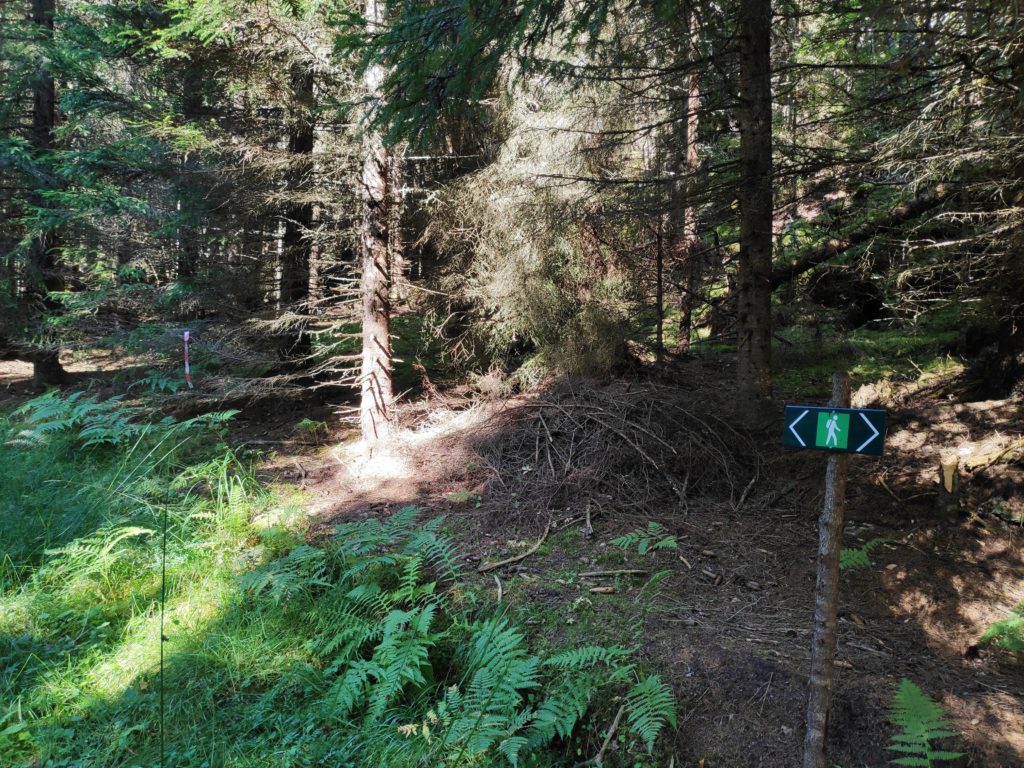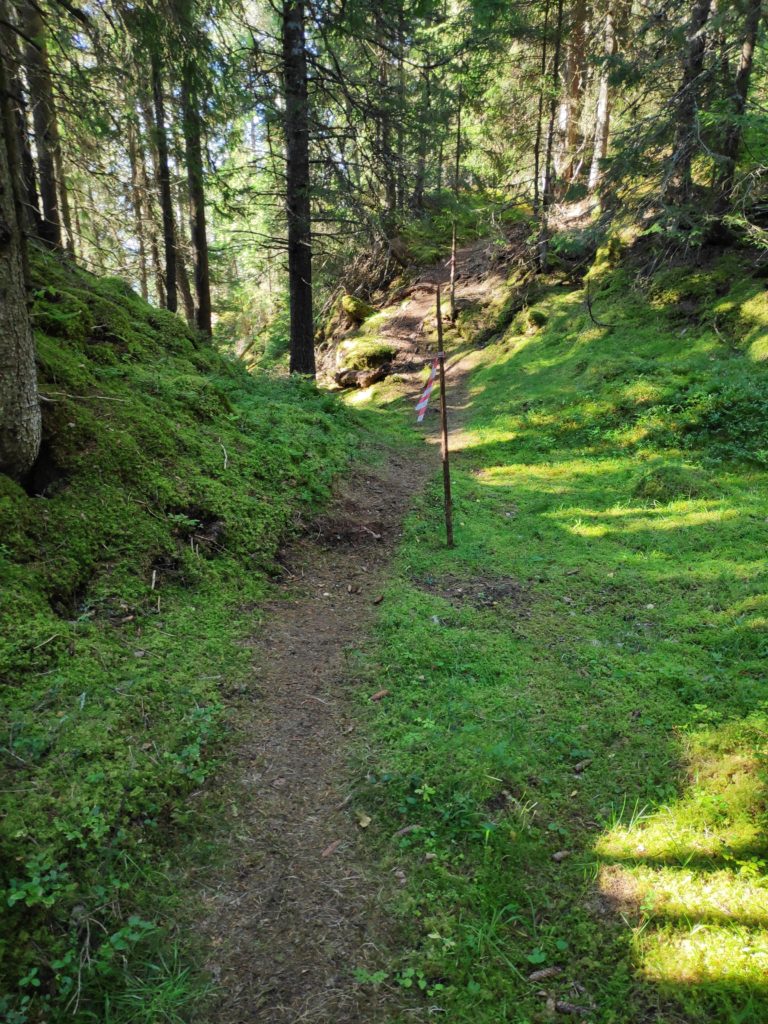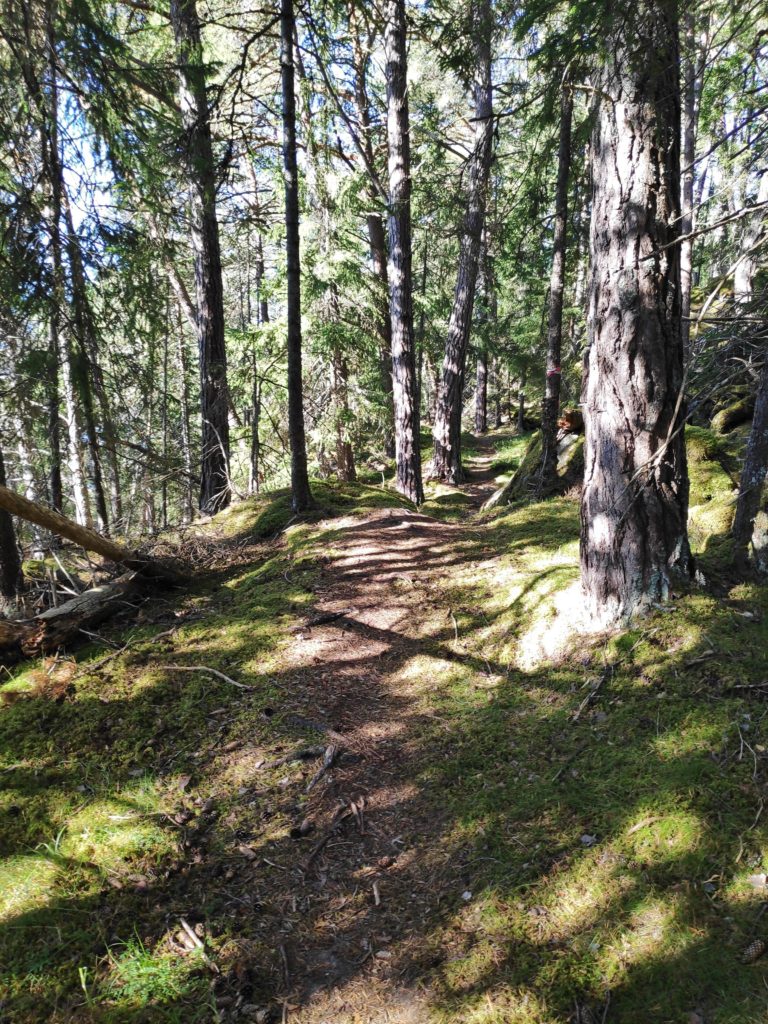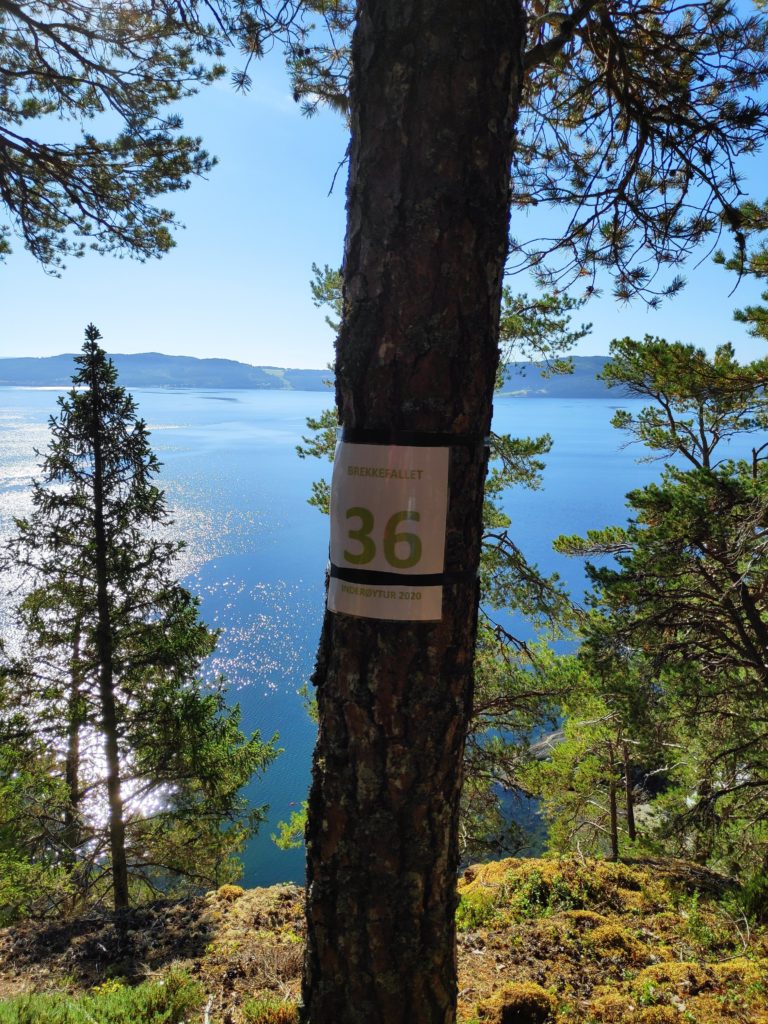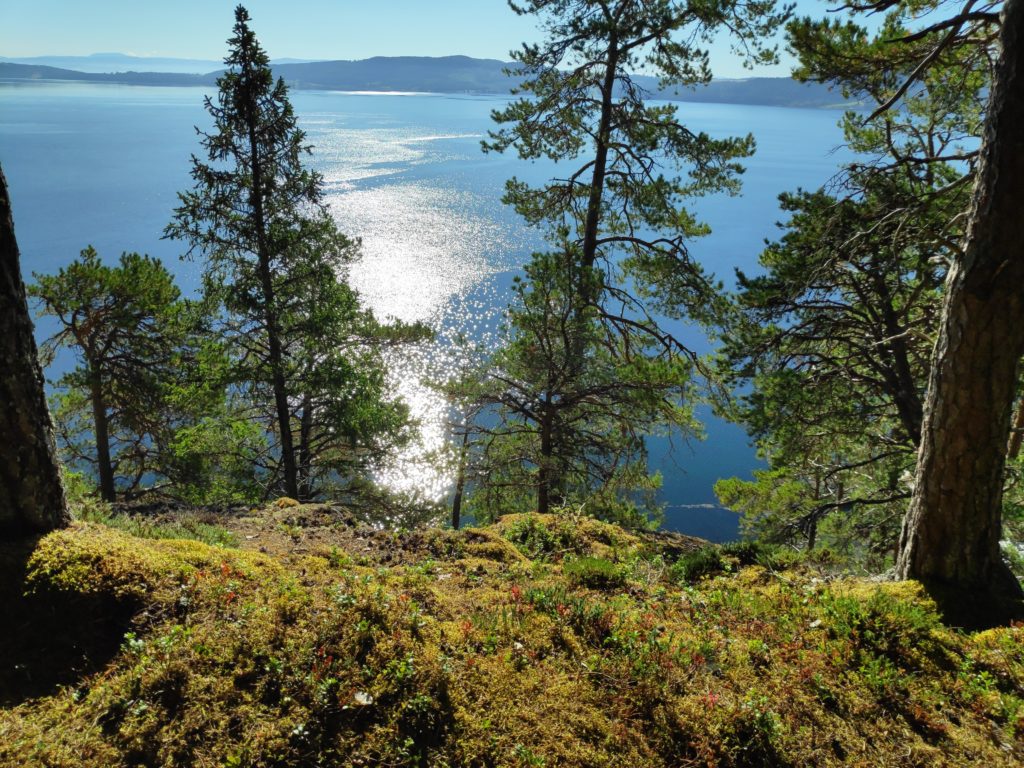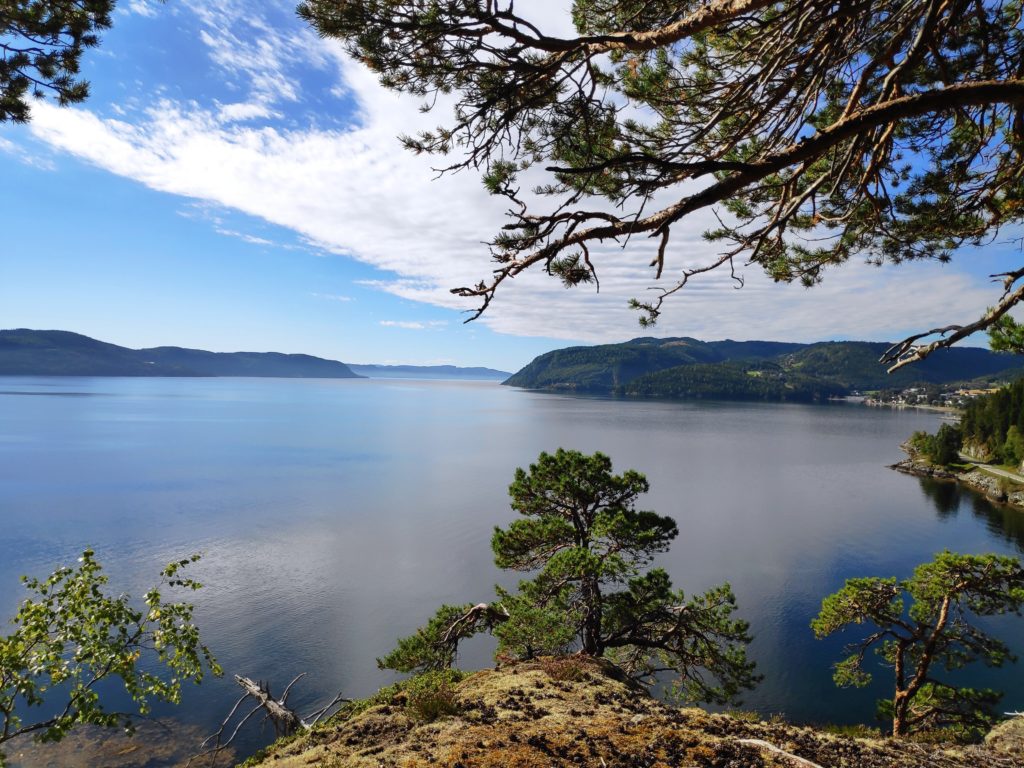I made a decision a while ago to buy locally produced food when it was conveniently available at a competitive price. I don’t buy everything that might be available as it must be things that we use.
Two of the products that are produced on local farms in our neighbourhood are eggs and milk.
I started buying eggs quite a while ago now. It is a short walk up to the neighbouring farm. We get 30 eggs at a time and we can also buy double-yoked eggs or cracked eggs at differing prices. I buy just the regular eggs.
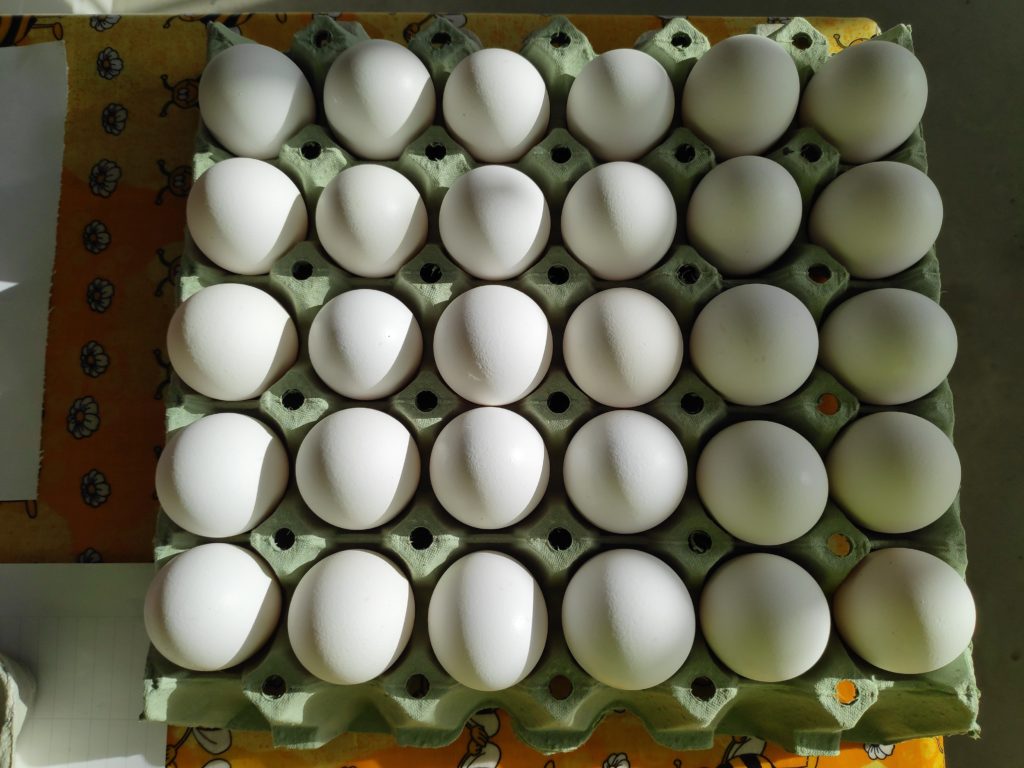
In addition to eggs, I can also get cucumbers at the egg farm, though the cucumbers are produced at another farm in Inderøy. Though I don’t purchase it, I can also buy honey here, produced by the farmer’s wife. I find their price a bit high, so have only purchased it once.
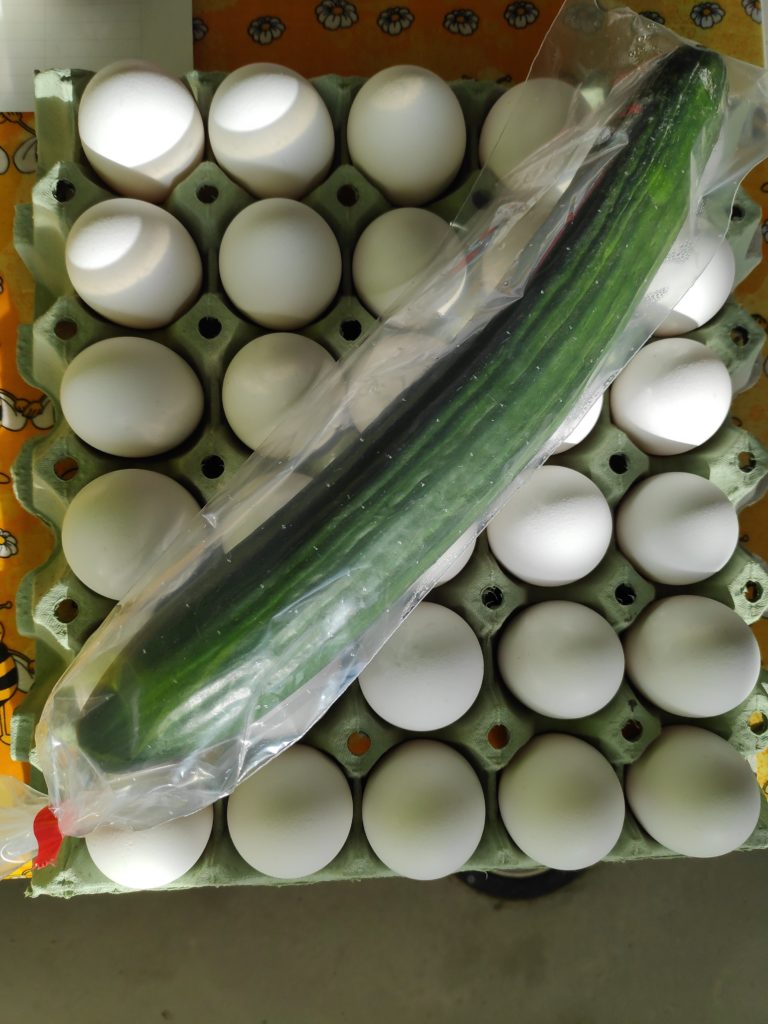
I also buy my whole milk in a bottle at a farm that is just a little bit farther away, but still within walking distance. I usually get two liters of milk at a time. One pays a deposit on the bottle on the first purchase and after that one returns the empty bottle and only pays for the milk itself.
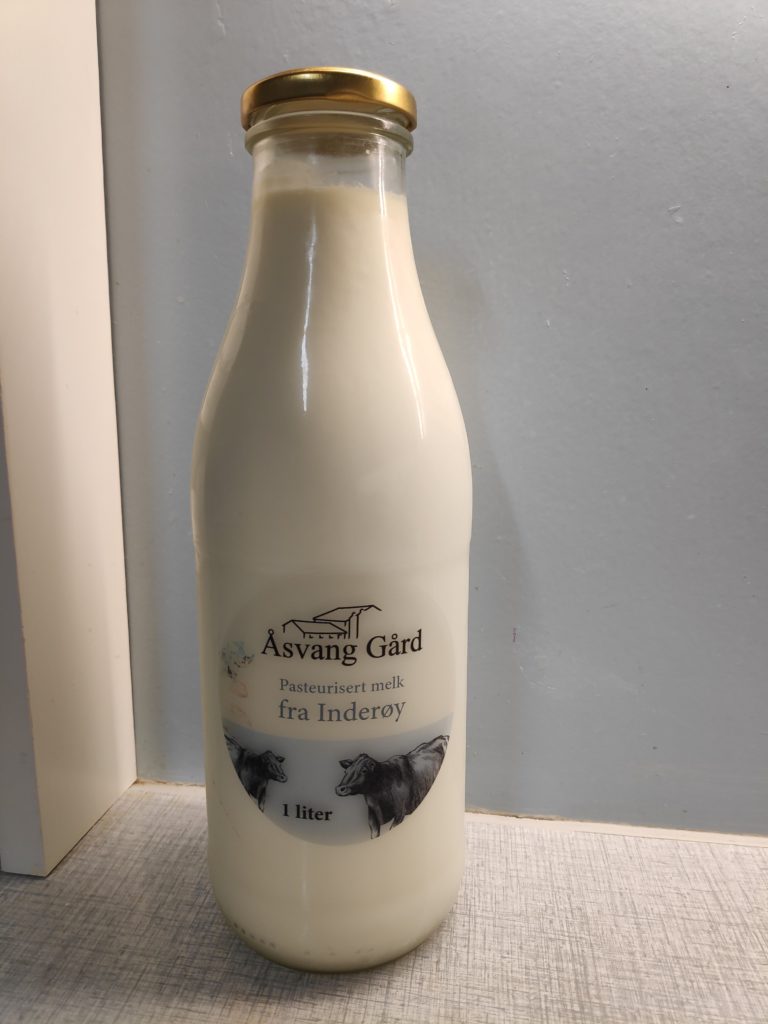
In both cases I use a small backpack to carry home the food. Eggs are put into 12-egg cartons which nicely fit in the backpack. Two or three liters of milk also fit nicely into the backpack, though not both eggs and milk at the same time.
To pay for what I purchase, I can use my telephone to send the money while I am at the farm. No invoices or delayed payment. I pay when I take the food. I often meet the farmers and it is nice to chat to them for a few minutes.
This is one way that I can contribute to farmers trying out new marketing ideas.

